Submitted by WA Contents
Herzog & de Meuron’s New Tate Modern opens on Friday
United Kingdom Architecture News - Jun 14, 2016 - 18:32 9830 views
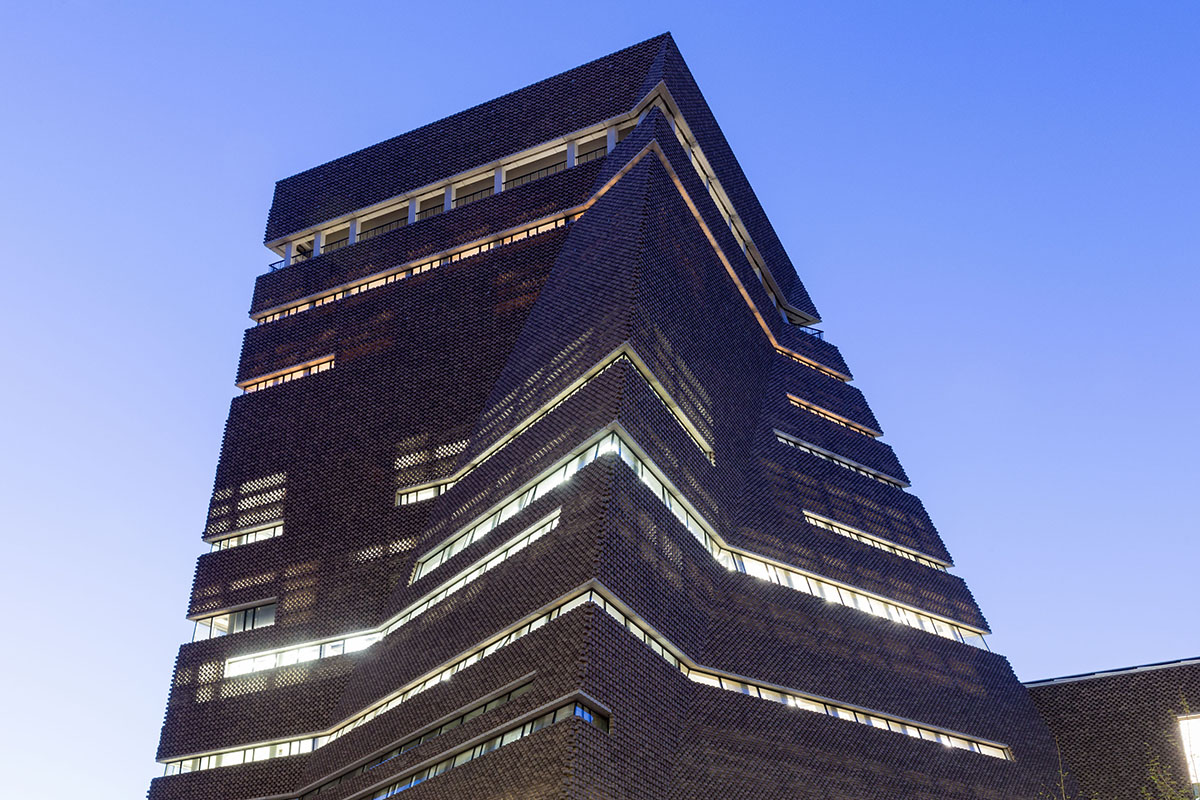
The New Tate Modern designed by Herzog & de Meuron, opens to the public on Friday, June 17. The new Tate Modern is a new museum of the 21st Century, and it is the most important new cultural building to open in Britain since the British Library. Herzog & de Meuron also designed the original conversion of the Bankside Power Station in 2000. The new Tate Modern will house the world’s most popular gallery of modern and contemporary art, which is now even more international, diverse and engaging.
Tate’s collection of modern art has been completely transformed since Tate Modern first opened in 2000, in order to show that great art is made all over the world. As a result of a focused and intensive international acquisition programme over recent years, the collection is now far more diverse, including more photography, performance and film, as well as more work by women artists.
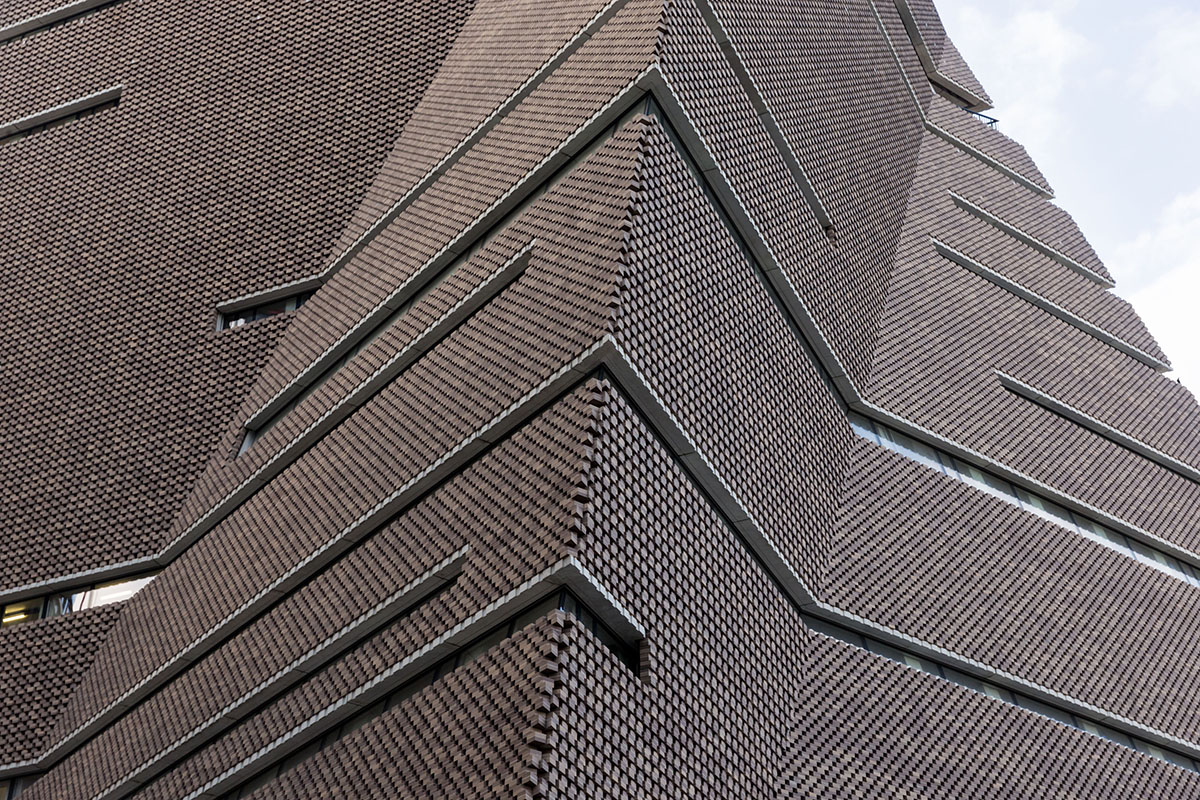
The Switch House increases the size of Tate Modern by 60% and offers a huge new variety of experiences for visitors. Image © Iwan Baan
They range from the subterranean concrete Tanks, the first permanent museum spaces dedicated to live art, to new spaces for Learning and the magnificent panoramic public viewing terrace on Level 10, offering a completely new perspective on London. The Turbine Hall now becomes the central space of the museum.
Herzog & de Meuron's new development adds another decisive dimension to the architecture and environment of this quarter and beyond. With a new entrance to The South, and a direct north-south passage, taking people from the Thames through the existing building and the Turbine Hall out to a new city plaza to the south on Sumner Street and from there on to Southwark, the development connects Southwark with the Thames and provide much improved open, public space.
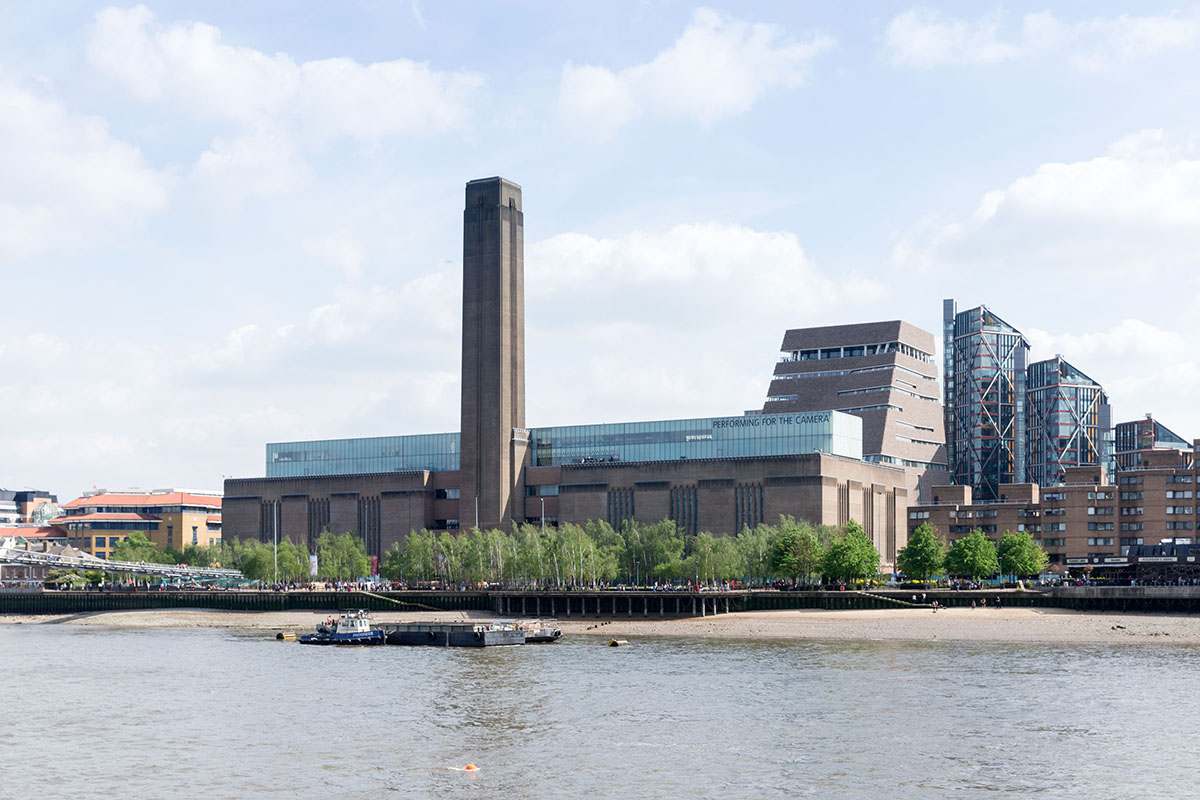
Outside view of the new Tate Modern. Image © Iwan Baan
Tate Modern is the world’s most visited museum of modern art. In its next stage of development the vision is to establish a new model for museums of modern and contemporary art, by fully integrating the display, learning and social functions of the museum, strengthening links between the museum, its locality and the city. In close collaboration with the Tate, Herzog & de Meuron carved a path through the jungle of unusually numerous parameters that must be taken into account. The resulting paths and connecting lines, gradually acquired shape, condensing into a pyramidal form generated from the combined geometries of the site context and existing building.
The clover- shaped dramatic subterranean oil tanks are at the heart of these plans and they are a point of departure for the new building. When we converted the power station we dug out the Turbine Hall in order to turn the vast physical dimensions of the existing structure into a tangible reality. Here, the Oil Tanks form the foundation of the building as the new volume develops and rises out of the structure below.
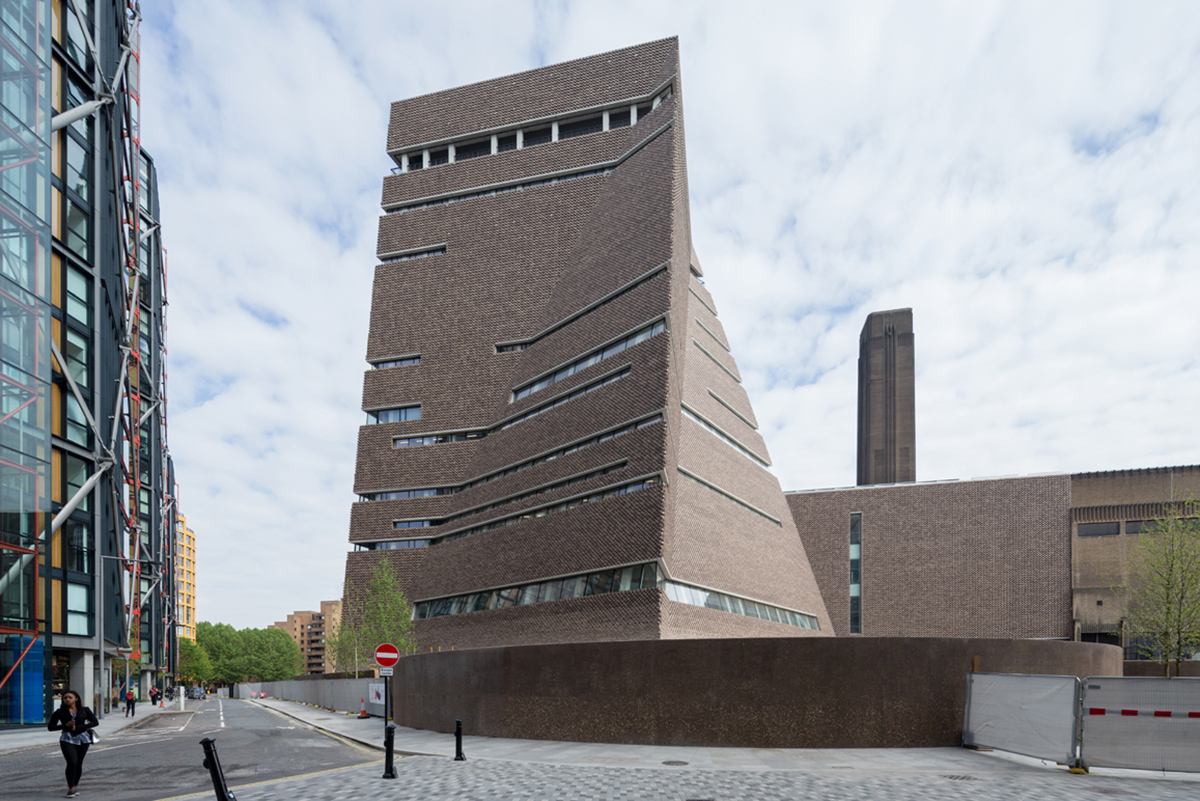
Switch House. Image © Iwan Baan
They are not merely the physical foundation of the new building, but also the starting point for intellectual and curatorial approaches which have changed to meet the needs of a contemporary museum at the beginning of the 21st century. These approaches require a range of gallery spaces, both larger and smaller, along with 'as found' spaces of less conventional shape, and better facilities for the gallery’s popular learning programmes.
As well as doubling the gallery space, The Tate Modern Project creates a diverse collection of public spaces dedicated to relaxation and reflection, making and doing, group learning and private study. These spaces are spread over the building and linked by a generous public circulation system rising through the building. The vertical orientation of these spaces is clear in the same way that a horizontal orientation is evident in the first phase of the Tate Modern.
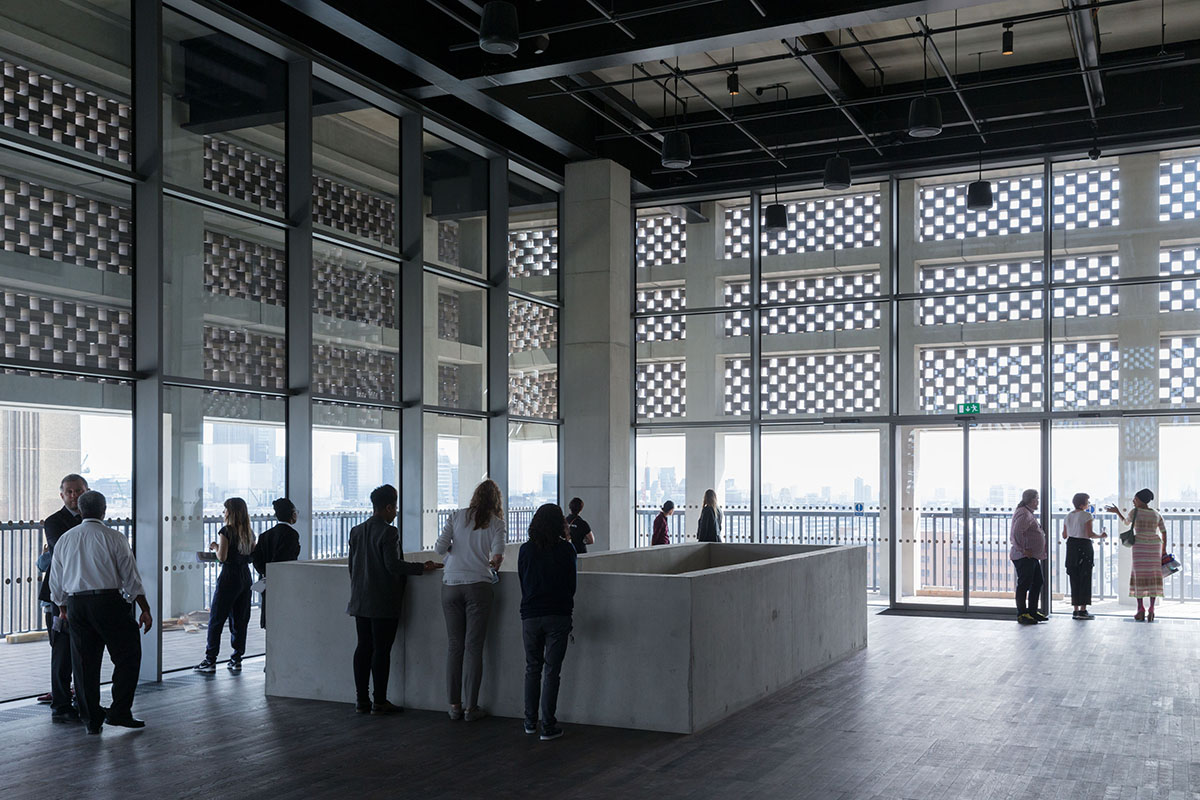
A gallery view with double-height. Image © Iwan Baan
''Tate Modern has changed London since 2000. The impact it has had on urban design and the development of the South Bank and Southwark has been as substantial as its influence on the city’s artistic, cultural and social life. The new extension will add another decisive dimension to the architecture and environment of this quarter and beyond. An addition to an existing building is always very difficult, even problematic: some people will like the new part better, others will prefer the old part, some may say the extension was not necessary, others are convinced of the opposite. We wanted to anticipate such controversial views. Our aim was to create a building conglomerate which appears as one thing, not as a phase one and a phase two'' said Jacques Herzog, Herzog & de Meuron.
At the same time the studio felt it was important for the building to be visible from the north. As one approaches Tate Modern from the river, it can be seen rising behind the power station without competing with the iconic chimney. Integrating the new building into the existing has been fundamental to the project, as well as integrating it into the skyline of the city and ensuring that visitors both inside and out could orient themselves. The architecture studio combined elements of Tate Modern, old and new, to be expressed as a whole, to have them come together and function as a single organism.
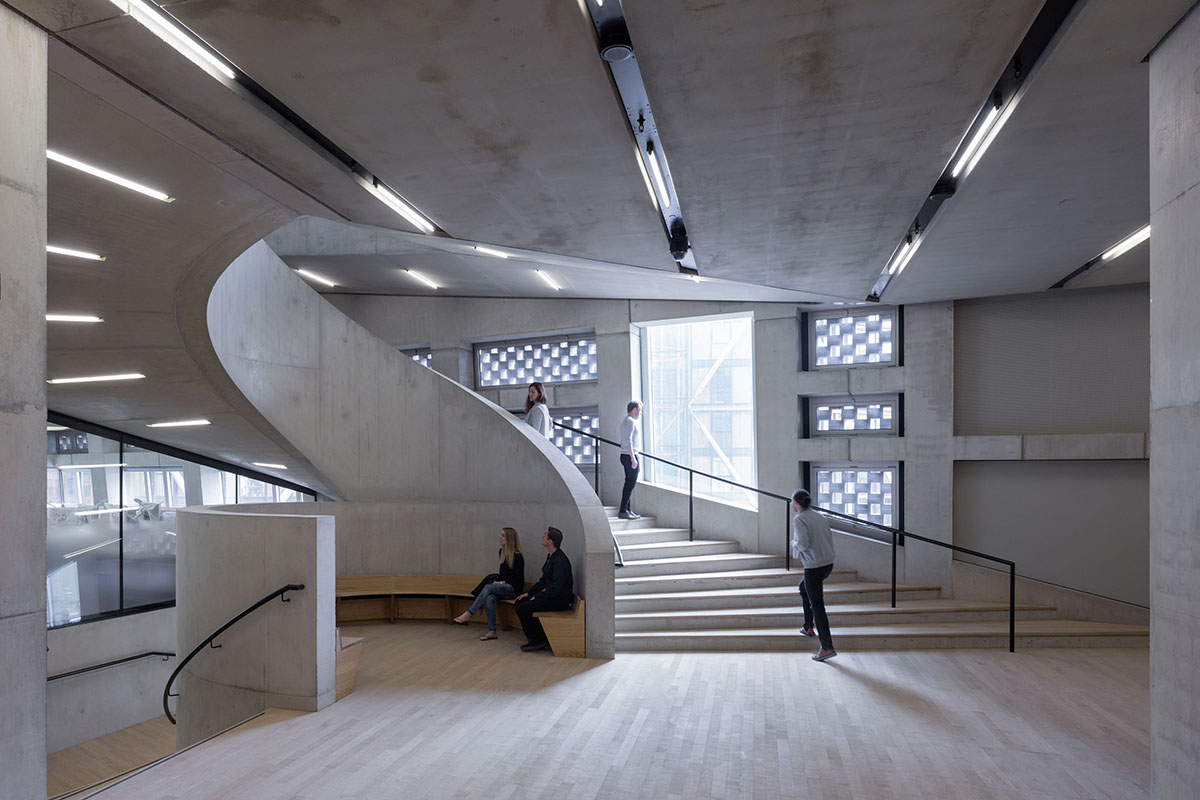
Hidden seating places are placed under the concrete staircase. Image © Iwan Baan
''We are delighted that the initial concept for Tate Modern, as envisaged at the time of the first competition in 1995, has become a reality. The original cross-access concept for the museum has been realized with entrances from three different sides: one can access the building and the Turbine Hall from the north, the west and now also from the south side. The new Switch House creates a previously-missing link between the River Thames and the Southwark neighbourhood, and transforms the Southern part of the museum into an active and lively place that includes a new public garden for visitors and pedestrians alike. Inside the museum, the horizontal configuration of the classical galleries in the Boiler House is now enhanced with the vertical boulevard of the new extension, creating a kind of architectural topography through the building that will offer unexpected opportunities for both artists and curators to present art works outside the 'official' display areas of the galleries'' added Pierre De Meuron, Herzog & de Meuron.
Using the same base palette of bricks and brickwork in a radical new way, Herzog & de Meuron created a perforated brick screen through which light filters in the day and through which the building will glow at night. The brickwork also reacts to the inclined faces of the form by stepping to approximate the pure geometry.
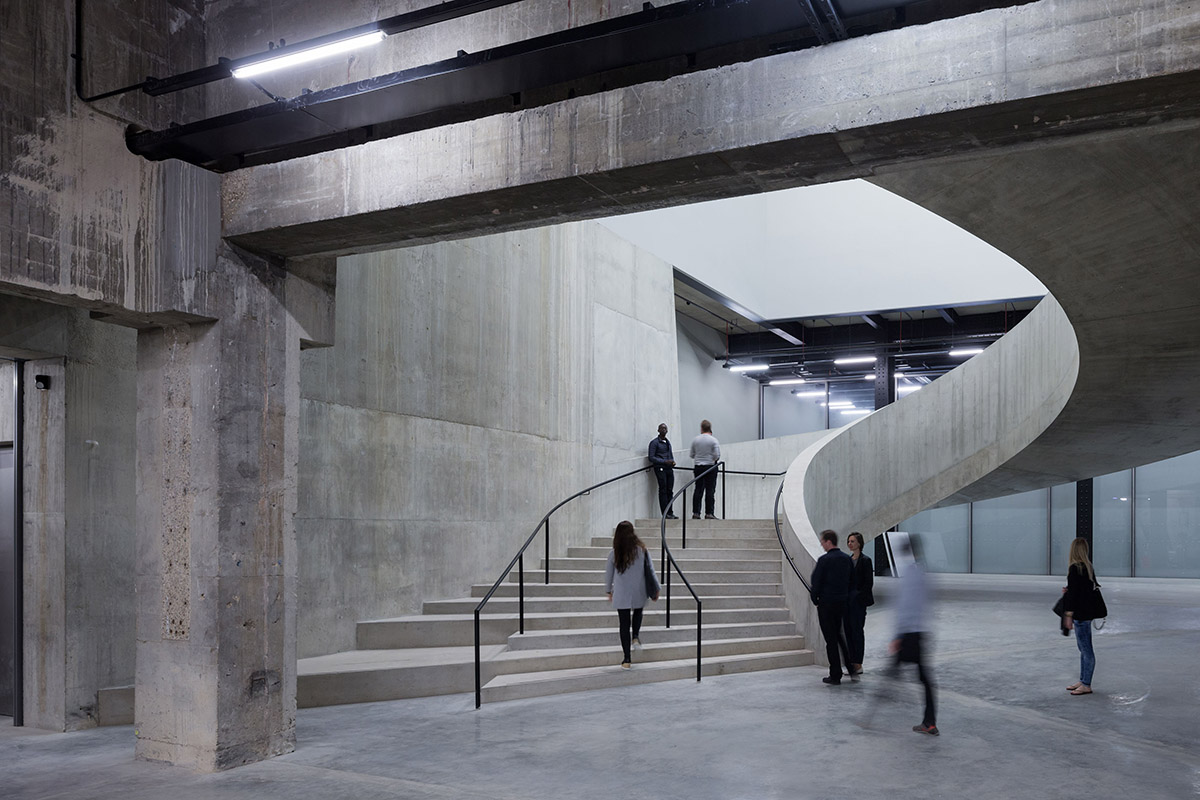
A sculptural staircase welcomes visitors. Image © Iwan Baan
''Over recent years we have been working hard to transform the international collection at Tate to reflect that great art is made all over the world. We are broadening the international remit both in contemporary and modern art; collecting and plotting the history of live art, film and new media; and, very importantly, buying and showing more work by women artists. I am delighted to now have the space to show this broader story of modern and contemporary art to the public for free'' stated Frances Morris, Director, Tate Modern.
With both of these simple actions, texture and perforation, the brickwork is transformed from a solid and massive material to a veil that covers the concrete skeleton of the new building. The façade changes in appearance depending on the observer’s point of view, not just from transparent to opaque, but also in pattern and orientation.

The Tanks © Tate Photography
This continuous wrap of perforated brickwork is broken through the introduction of horizontal cuts to allow for views out and to provide for daylight and natural ventilation to the internal spaces. The location of these 'cuts' is in direct relation to the internal programming and planning of the building. The result is a new yet symbiotic reading that is distinct and unique along the skyline of London.
See our previous coverage of New Tate Modern
Top image: Switch House / © Iwan Baan
> via New Tate Modern
